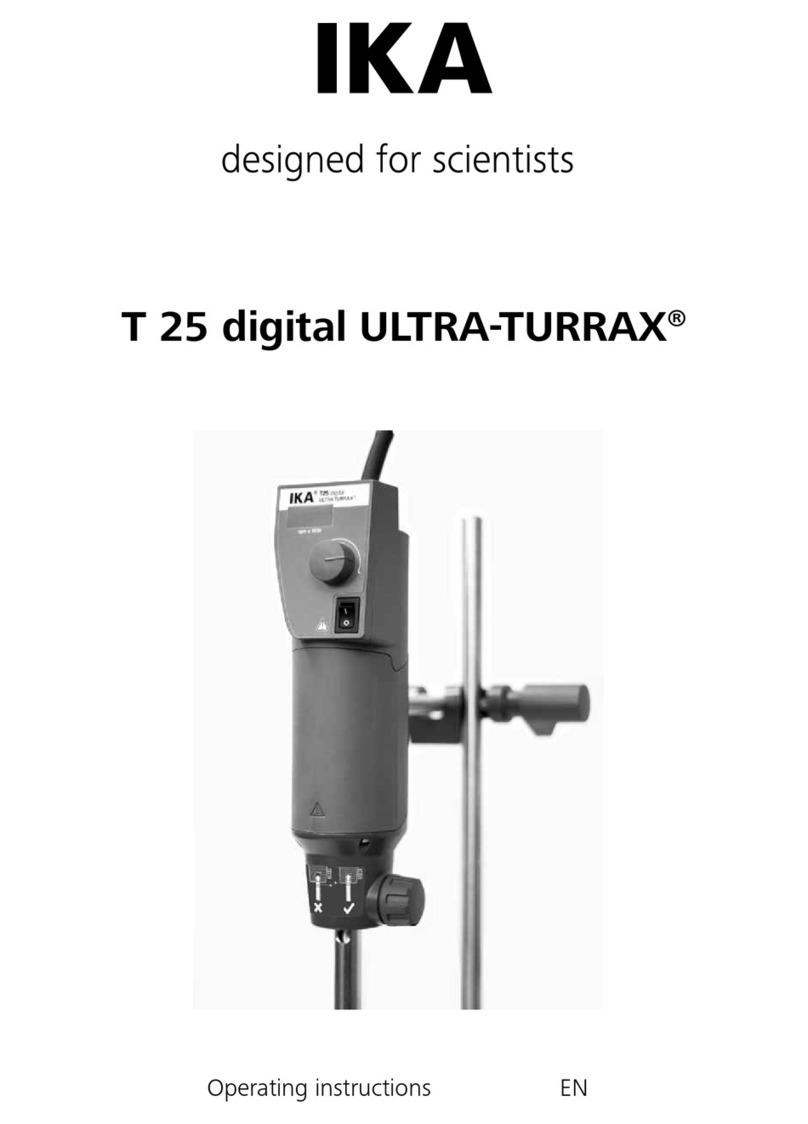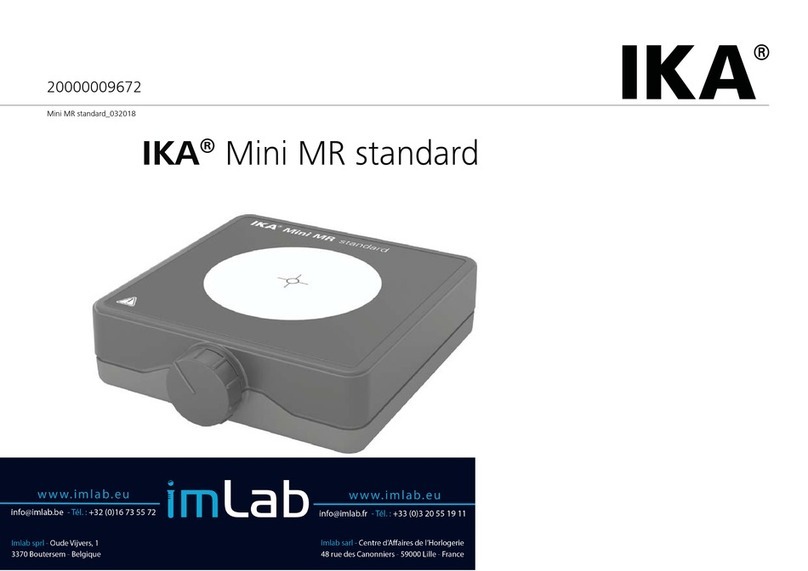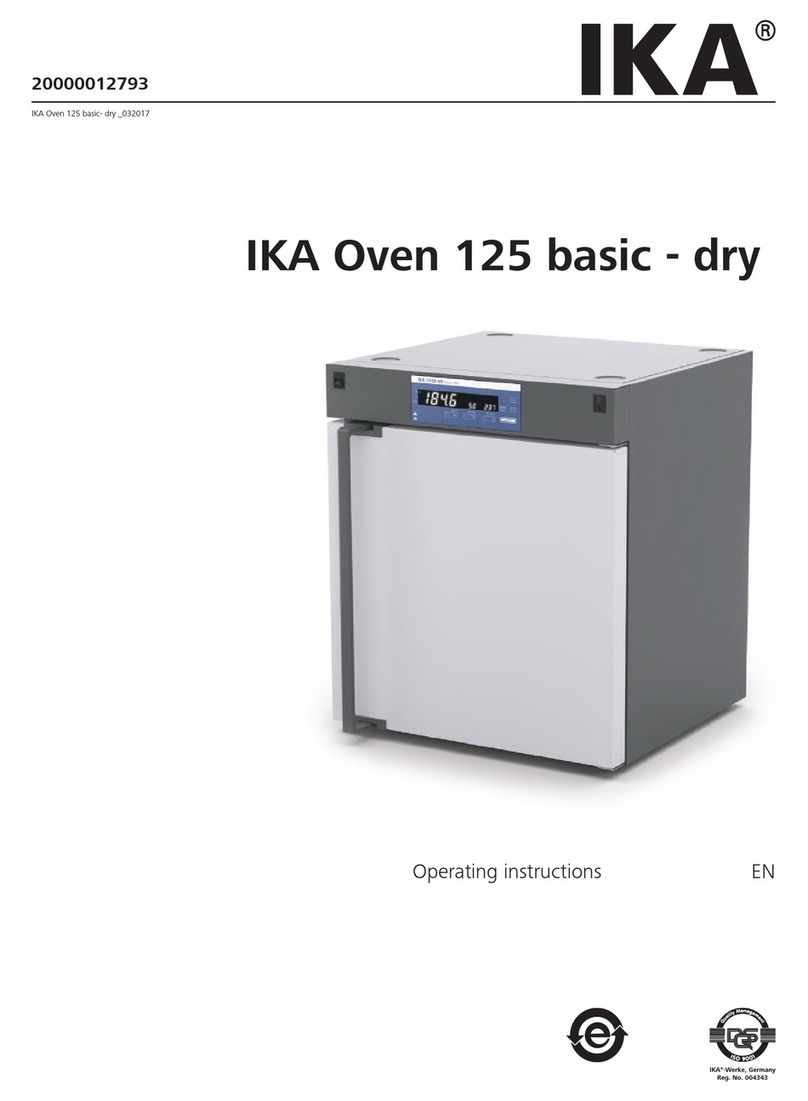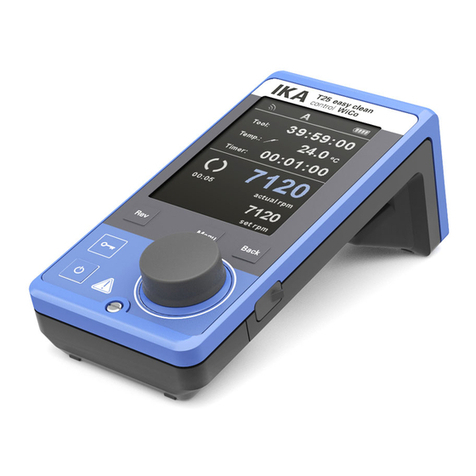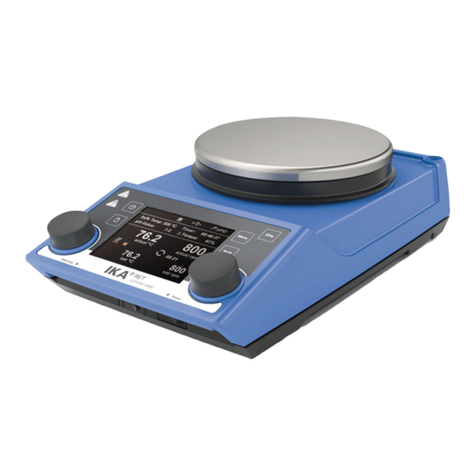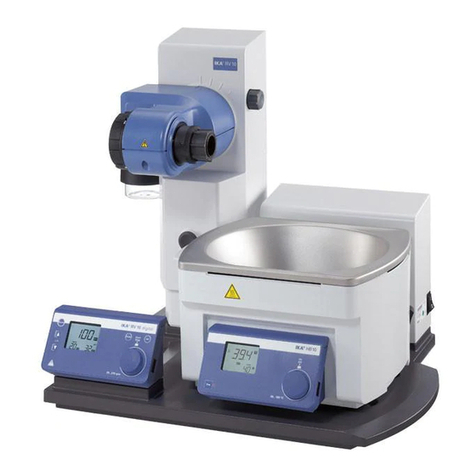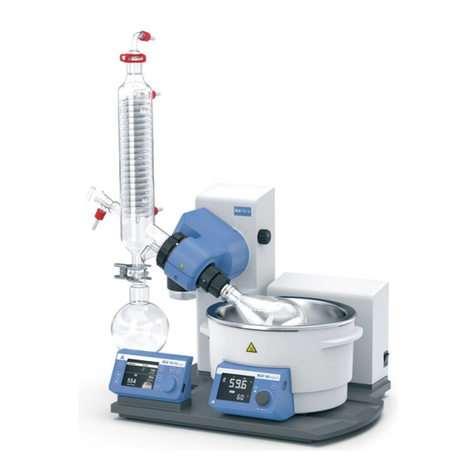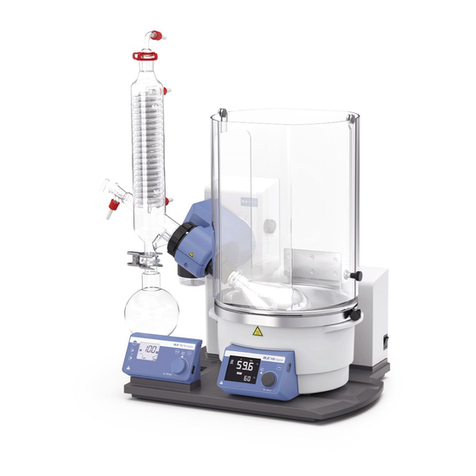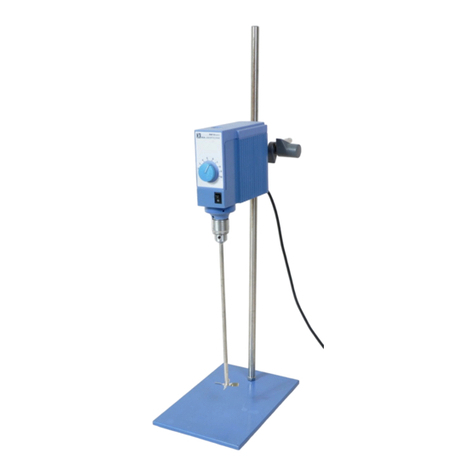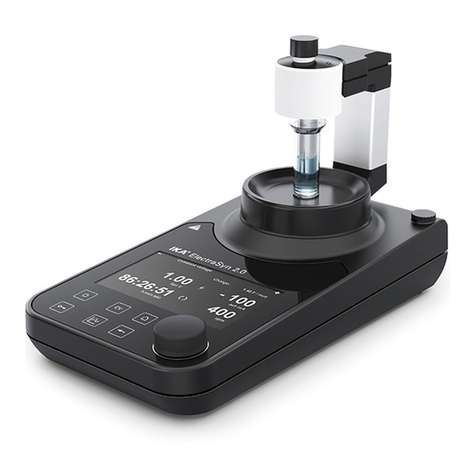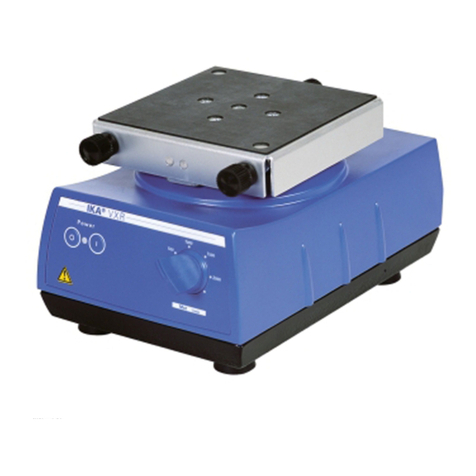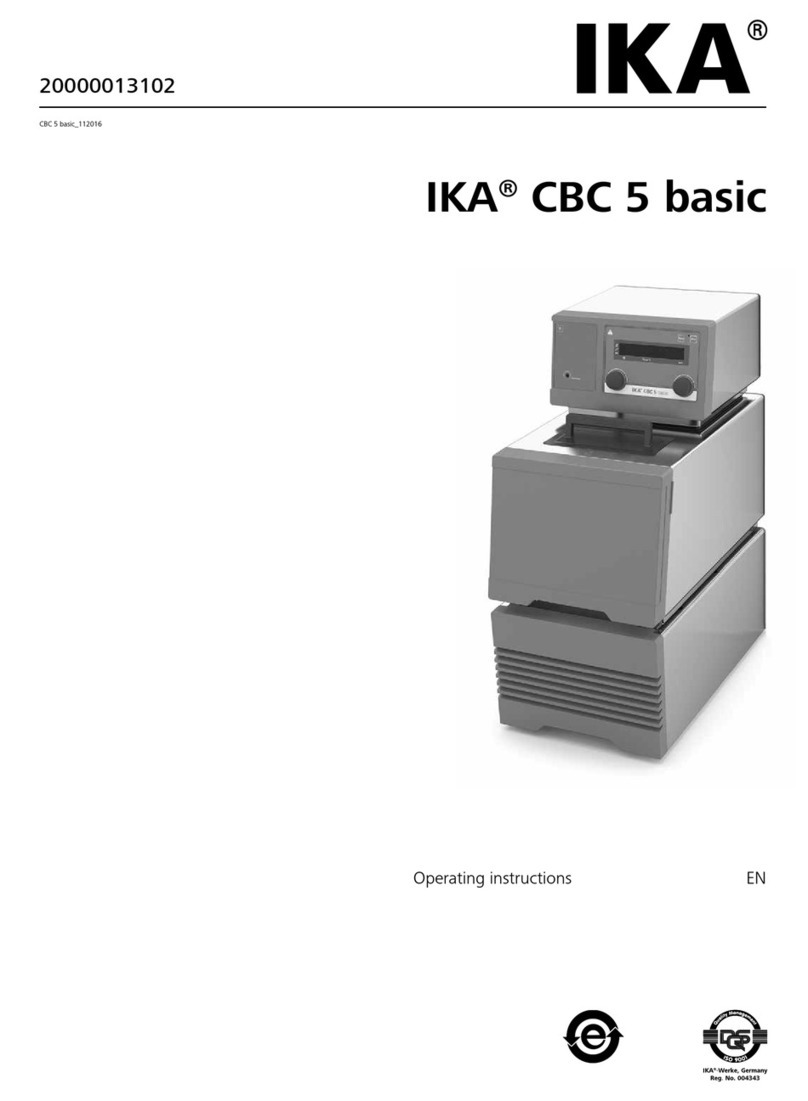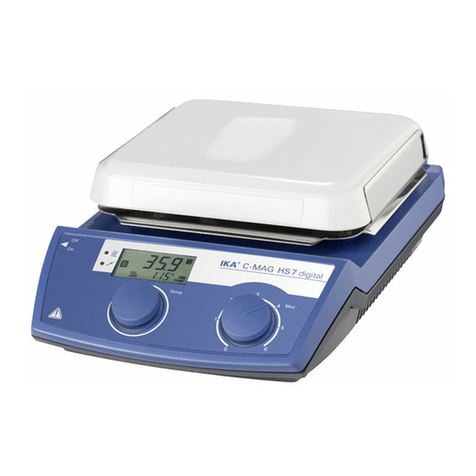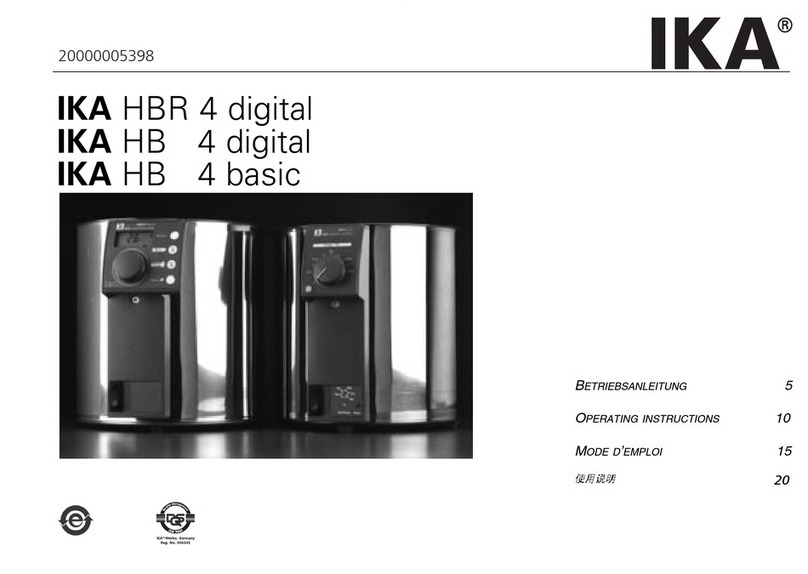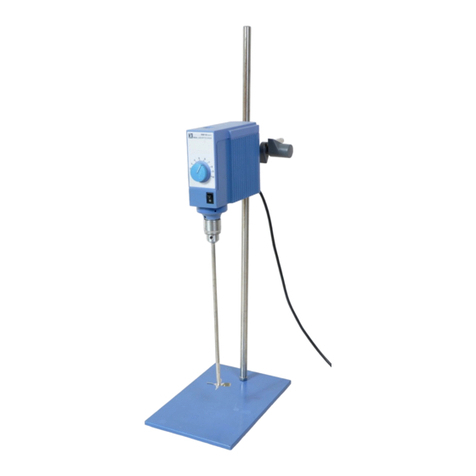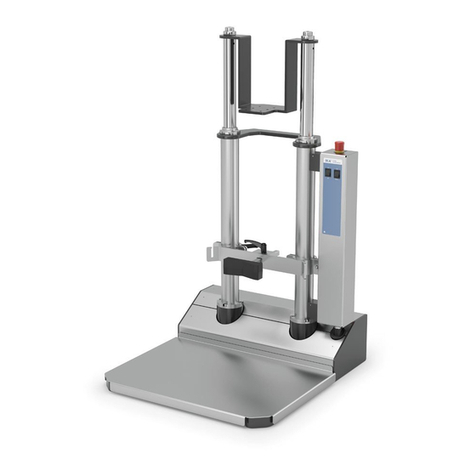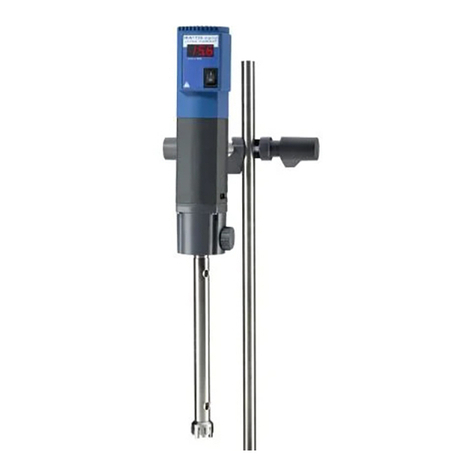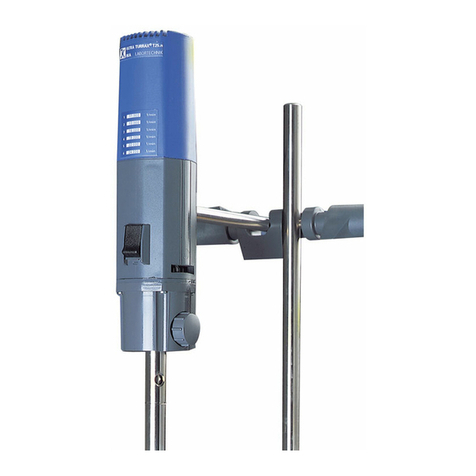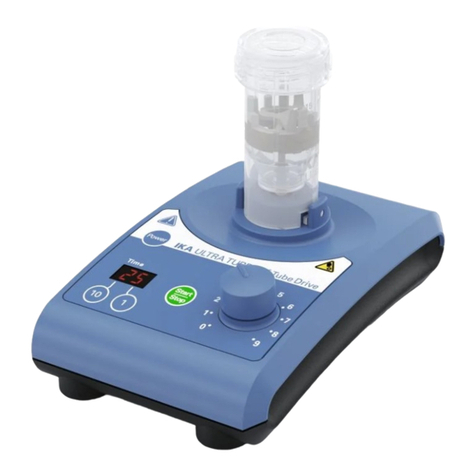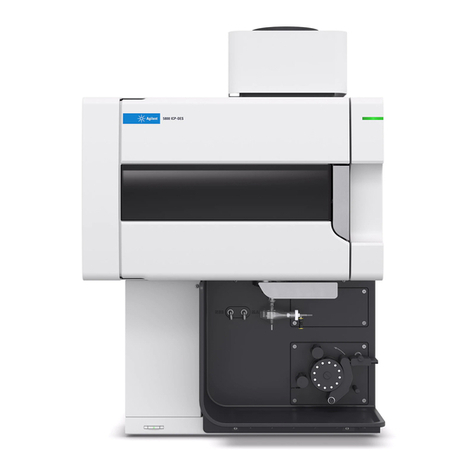
10 11
The temperature measurement with the vessel MultiDrive MI 250 T / MI 400 T works
exclusively with the MultiDrive control� When the “Temperature Limit“ is set in MultiDrive
control that the device stops after the temperature is reached� With the setting, both sample
and the vessel can be protected from overheating�
Note: The temperature measurement is useful to measure / limit the temperature increase of
the medium during the operation� It is not for a long time measurement of the room tempera-
ture or medium temperature without operation!
The temperature sensor react slowly without operation� When hot or cold medium is filled into
the empty vessel, it need some time for MultiDrive control to show the right temperature�
During operation the sensor react very fast and the MultiDrive control can show the right
temperature fast�
The temperature measurement can be inhomogeneous, especially if the cooling function is
working and the operation stops or the medium flow inside the vessel and stops partly because
of sticky medium�
Caution!
The temperature can be much higher on the beater or other parts of the vessel independent
from the temperature which is shown on the MultiDrive control display�
!Notice!
In order to avoid to damage the integrate temperature sensor of the vessel by overheating, the
MultiDrive MI 250 T / MI 400 T milling vessel can be used for grinding material with
hardness
up to 5 Mohs�
The vessels MultiDrive MI 250 T / MI 400 T has also an operating hours counter�
This works exclusively with the MultiDrive control� This drive unit can detect the operating hours
of the vessel and indicate when the next maintenance is required for the vessel� The operating
hours counter can also be used to monitor cleaning intervals� In this case shorter times can be set�
Note: For more information on temperature measurement and maintenance intervals, please
refer to the operating instructions of the drive unit�
Cutting milling:
The milling vessel with the cutting blade
MultiDrive MI 250.2 / MI 400.2
(not included with
the vessel) can grind bulky, elastic fibrous and soft materials with high cellulose content�
Mixed goods such as trash must be free of iron and non-iron metals� The feed material must not
be too moist or fatty� Otherwise, the material may adhere to the sides of the grinding container�
Following is a list of some materials that can be reduced:
Leaves, fibers, hops, cardboard, paper, hay, plastics, tobacco and roots�
The feed granularity should not be larger than 10 mm�
Note:
Materials that are not listed in these operating instructions may only be handled with the
grinding vessel after confirmed with IKA, especially if there is a risk of explosion (dust explosion
due to electrostatic charge)�
Impact milling:
The milling vessel with a beater (standard beater:
MultiDrive
MI 250.1 / MI 400.1) can grind
soft, medium hard and brittle materials with a Mohs’ scale of hardness of up to 5�
For harder material, the wear and tear on the grinding tool is high and grinding therefore becomes
uneconomical�
For grinding hardness greater than 5 Mohs, we recommend special hard metal beater
(MultiDrive MI 250.3 / MI 400.3, not included with the vessel)� With it, the device can be
used for grinding hard and brittle materials with a Mohs’ scale of hardness of up to 9�
This
prevents the sample from being contaminated by bits of the grinding tool broken off by
wear and tear�
Everything that breaks, is dry, and does not have a high fat content can be ground�
Following is a list of some materials that can be ground dry:
Wheat, barley, corn, malt, pectin, roasted coffee, nutshells, bones, ergot, peat, feed materials,
spices, resin, potash, seeds, salts, cinders, tablets�
The feed grain size should not be larger than 7 mm�
Tough grinding material must be cooled, for example by adding pulverized dry ice to the grinding
vessel�
Working with cooling water:
There are two connections for the cooling circuits on the vessel� We recommend hoses with
dimensions of Ø 6�0 (inside diameter) x 1�5 mm� Then, the device can be cooled with tap water
or an IKA recirculating chiller via these hoses�
Note: The pressure in the cooling circuit must not exceed 1 bar�
The grinding chamber can only be filled to half of the maximum filling quantity especially when
material containing oils and similar materials are ground�
If more refrigeration is required, the ground material should be cooled prior to being put into
the grinding chamber�
Note the freezing point of the coolant in the cooling circuit when using dry ice�
Working with coolants – Dry ice (CO
2
) cooling:
Please observe the safety instructions!
Grinding causes the mill feed to heat up� This may not always be desirable as the mill feed can
change when heated (e�g� increased oxidation, loss of moisture, evaporation of volatile compo-
nents, etc�)�
It may only be possible to crush mill feed which is viscous or has a high fat content by embrittling
using coolants�
Working with the coolants dry ice (CO
2
):
›
Put the feed material into the grinding vessel�
›
Add crushed dry ice�
›
Thoroughly mix the dry ice with the feed material�
›Attach the grinding vessel cap when the dry ice is completely vaporized, otherwise high
pressure may build up in the grinding chamber�
Note: That the mill feed heats up again extremely quickly during grinding (it may reach room
temperature again after approximate 10 seconds of grinding)� You may have to repeat the pro-
cess several times if the product is not adequately ground after one cooling process�
Warning!
Dry ice is solid carbon dioxide that expands into a gas� You can lose of consciousness, if dry ice
vapors are inhaled directly over a longer period of time� Use dry ice only in a well ventilated place�
Dry ice is extremely cold (-109 F/ -78 °C)� Avoid contact with skin and eyes�
When using dry ice, observe the applicable accident prevention regulations�
